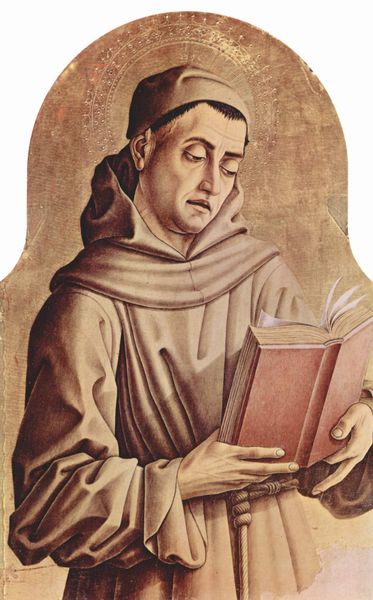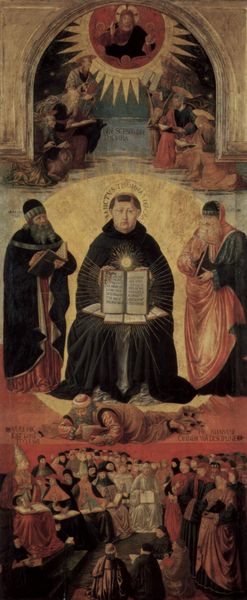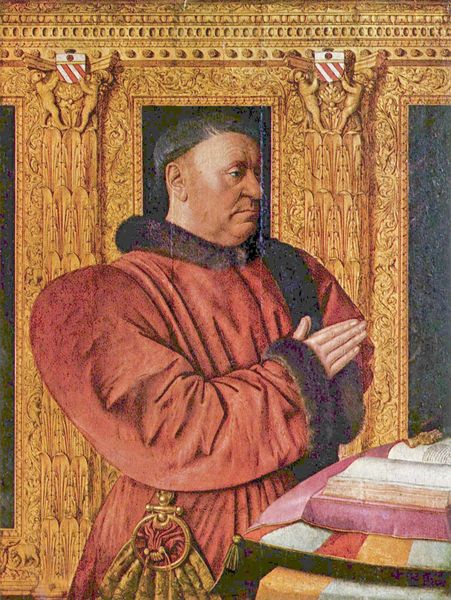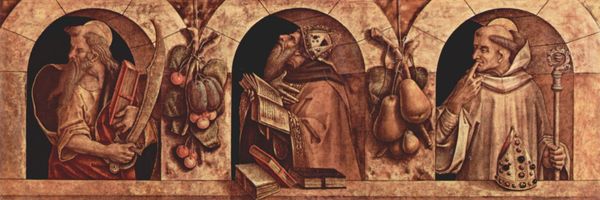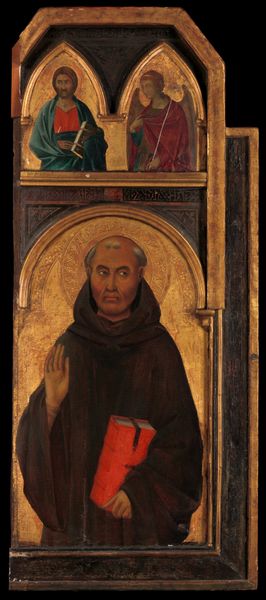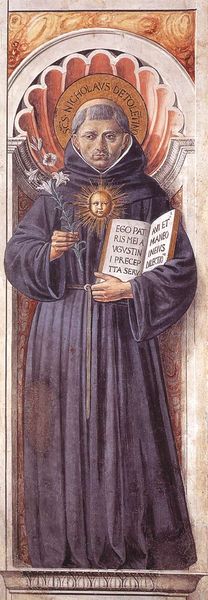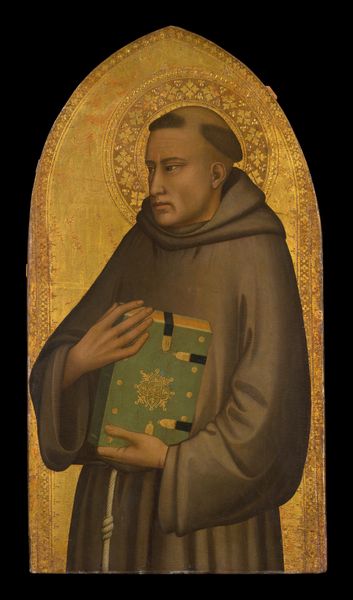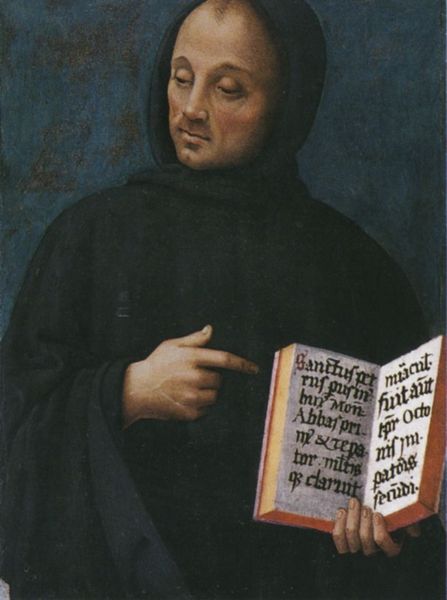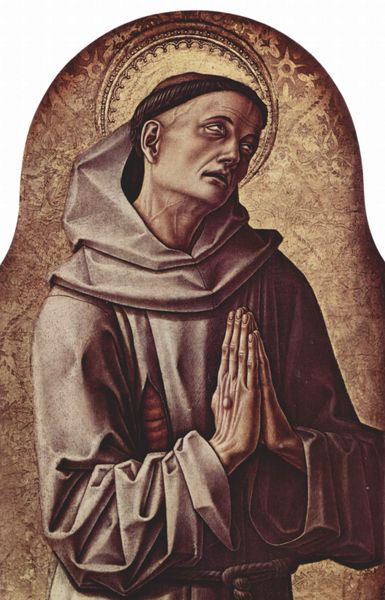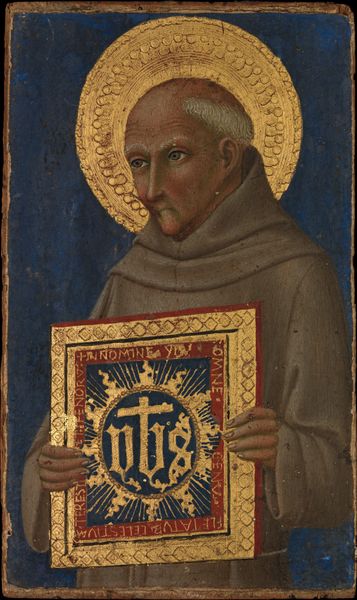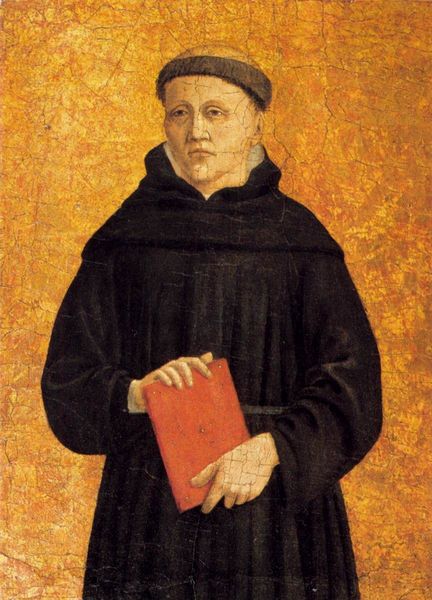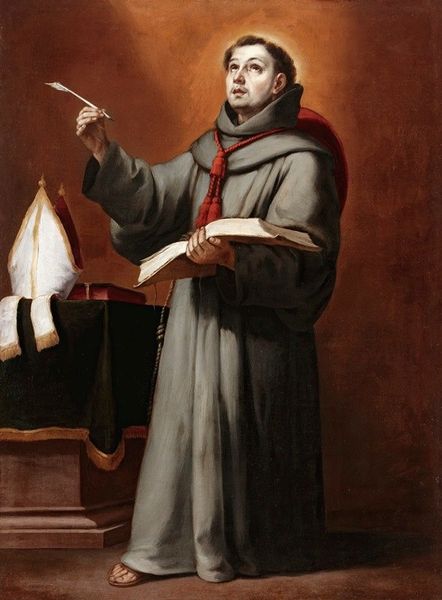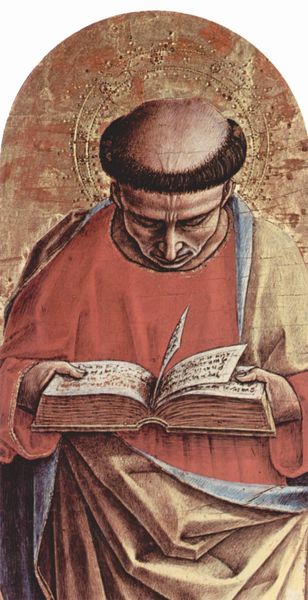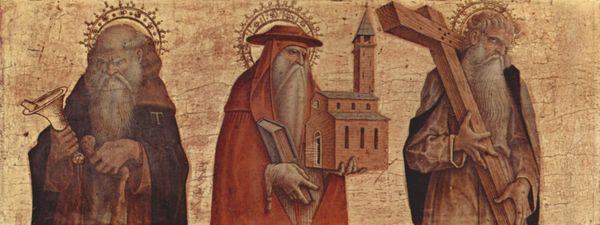
painting, oil-paint
#
portrait
#
painting
#
oil-paint
#
oil painting
#
portrait reference
#
christianity
#
history-painting
#
facial portrait
#
academic-art
#
italian-renaissance
#
early-renaissance
#
portrait art
Dimensions: 61 x 40 cm
Copyright: Public domain
Editor: This is Carlo Crivelli's "Saint Thomas Aquinas," painted around 1476. What strikes me is the architectural detail in the small building he's holding. It seems to represent the Church, perhaps? What do you see in this piece? Curator: I see layers of meaning encoded through specific symbols. The miniature church, as you observed, represents not just the physical structure but also the theological foundation Aquinas laid. Note how delicately it is rendered – an insistence on the importance of doctrine. The open book alludes to his written works, vehicles through which knowledge is cultivated. Editor: So the objects he holds represent aspects of his legacy? Curator: Precisely. Look closer, though. The radiant star on his chest – an emblem of divine illumination. Consider how Crivelli places it – central and commanding – to represent the enlightenment and truth that Aquinas sought and shared. This emblem underscores the concept of *sapientia*, of wisdom, as being heaven-sent. Editor: That’s fascinating. I was so focused on the building, I almost missed it. Does his gaze direction play into this symbolism too? Curator: It does. It's an upward, intellectual gaze. Notice how the angle draws us, and perhaps Aquinas himself, towards higher understanding. Editor: So the image becomes a visual encapsulation of Aquinas’s life and values. Thank you for making the cultural memory palpable and accessible. Curator: Indeed. It is not merely a portrait but a window into a world where symbols carry immense cultural and psychological weight.
Comments
No comments
Be the first to comment and join the conversation on the ultimate creative platform.
